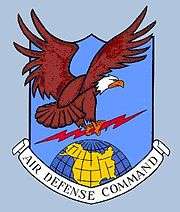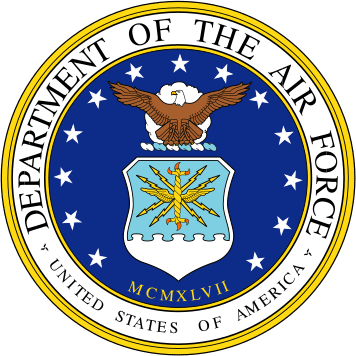Fortuna Air Force Station
Fortuna Air Force Station | |
|---|---|
| Part of Air Defense Command (ADC) | |
|
Elkhorn Township, Divide County, west of Fortuna, North Dakota | |
|
Circa 1977 historical photograph | |
 Fortuna AFS Location of Fortuna AFS, North Dakota | |
| Coordinates | 48°54′14″N 103°52′00″W / 48.90389°N 103.86667°W |
| Type | Air Force station |
| Code | ADC ID: P-27 NORAD ID: Z-27 |
| Site information | |
| Owner | sold to civilians, subsequently forfeited to county auditors |
| Controlled by |
|
| Site history | |
| In use |
April 1952–July 1979 (main site), April 1952–1984 (GATR) |
| Garrison information | |
| Garrison | 780th Air Defense Group, 780th Aircraft Control & Warning Squadron (later 780th Radar Squadron) |
Fortuna Air Force Station is a closed United States Air Force General Surveillance Radar station. It is located 4.2 miles (6.8 km) west of Fortuna, North Dakota. It was closed in 1979 as a radar station, remaining as a Long-Range Radar (LRR) facility until 1984.
Fortuna Air Force Station was part of the last batch of twenty-three radar stations constructed as part of the Air Defense Command permanent network. It was activated in April, and declared completely operational in late 1952.
History
The 780th Aircraft Control and Warning Squadron (AC&W Sq) began operations using AN/FPS-3 search and AN/FPS-4 height-finder radars, and initially the station functioned as a Ground-control intercept (GCI) and warning station. As a GCI station, the squadron's role was to guide interceptor aircraft toward unidentified intruders picked up on the unit's radar scopes. During 1957 an AN/GPS-3 search radar made a brief appearance. Reportedly, an AN/TPS-10D was also briefly used. In 1958 the 780th began operating an AN/FPS-20A search radar that replaced the AN/GPS-3. By 1960 a pair of AN/FPS-6, -6A handled height-finder chores.
During 1961 Fortuna AFS joined the Semi Automatic Ground Environment (SAGE) system, initially feeding data to DC-20 at Malmstrom Air Force Base, Montana. After joining, the squadron was redesignated as the 780th Radar Squadron (SAGE) on 1 August 1961.[1] The radar squadron provided information 24/7 the SAGE Direction Center where it was analyzed to determine range, direction altitude speed and whether or not aircraft were friendly or hostile. Fortuna was incorporated into BUIC I, a manual back-up interceptor control system implemented in 1962. BUIC I provided limited command and control capability in the event the SAGE system was disabled.
In 1963, the AN/FPS-20A was removed, and the makeup of the radars at Fortuna consisted of an AN/FPS-35 search radar along with AN/FPS-6 and AN/FPS-90 height-finder radars. On 31 July 1963, the site was redesignated as NORAD ID Z-27.
In 1964 an AN/FPS-26A height-finder radar was installed, and the AN/FPS-6 was retired. In the winter of 1964, a fierce wind storm blew over the AN/FPS-35 sail; the sail was not replaced until the following year (by the one formerly installed at Manassas Air Force Station, Virginia, reportedly). For the interim, in 1965 an AN/FPS-64 search radar was installed in the former AN/FPS-20A tower; it was removed in 1967 after the AN/FPS-35 was again fully operational. The AN/FPS-90 height-finder radar was removed in 1969. Work proceeded on the installation of BUIC II in 1966, after the installation of a Burroughs CSA-51 computer system, In 1969 it became a BUIC III site.
Over the years, the equipment at the station was upgraded or modified to improve the efficiency and accuracy of the information gathered by the radars. The 780th Radar Sq was inactivated and replaced by the 780th Air Defense Group in March 1970.[1][2] The upgrade to group status was done because of Fortuna AFS' status as a Backup Interceptor Control (BUIC) site. BUIC sites were alternate control sites in the event that SAGE Direction Centers became disabled and unable to control interceptor aircraft. The group was inactivated and replaced by the 780th Radar Squadron.[1][2] as defenses against manned bombers were reduced. The group was disbanded in 1984.[3] Normal operations continued until 1979 when Aerospace Defense Command was inactivated in September and the radar station was inactivated. The GATR site (R-27) was retained until the Joint Surveillance System (JSS) switchover, c. 1984. The Federal Aviation Administration (FAA) opened an unmanned ARSR-4 radar facility about halfway between Sidney, Montana, and Watford City, North Dakota, (just off of Highway 68) before the Fortuna radars were finally decommissioned in 1984.
Current use
The station was bought by private investors that stripped the site of anything of value and sold it off. After this "salvage", the site was forfeited to Divide County over a valuation dispute, and now sits half-demolished, useless as a facility, and abandoned. An environmental impact study is currently planned as a precursor to a possible land reclamation effort.
Buildings and facilities
Buildings on the station include:
|
|
|
The Ground to Air Transmitter-Receiver (GATR) facility was located off-station at 48°53′05″N 103°53′03″W / 48.88472°N 103.88417°W, roughly one mile south of the main station.
Air Force units and assignments

Units
- Constituted as the 780th Aircraft Control and Warning Squadron
- Activated on 1 March 1951
- Redesignated 780th Radar Squadron (SAGE) on 1 August 1961
- Inactivated 1 March 1970
- Redesignated 780th Radar Squadron, 1 January 1974
- Activated 17 January 1974
- Inactivated 29 September 1979[1]
- Constituted as the 780th Air Defense Group on 13 February 1970
Assignments
- 545th Aircraft Control and Warning Group, 1 March 1951
- 29th Air Division, 6 February 1952
- Minot Air Defense Sector (Manual), 1 January 1961
- Great Falls Air Defense Sector, 25 June 1963
- 28th Air Division, 1 April 1966
- 24th Air Division, 19 November 1969 - 29 September 1979[1][2]
Commanders
- Major Phillip J. Acton
- Lt. Col. Glen A. Peebles
- Major Harold E. Daniel
- Major Larry McDonnough
- Major Curtis Yarwood
- 780th Radar Squadron
- Major Jack L. Breid, unknown - 1 March 1970[5]
- 780th Air Defense Group
- Major Jack L. Breid, 1 March 1970 - unknown[5]
See also
| Wikimedia Commons has media related to Fortuna Air Force Station. |
- List of USAF Aerospace Defense Command General Surveillance Radar Stations
- List of United States Air Force aircraft control and warning squadrons
References
Notes
- 1 2 3 4 5 Cornett, & Johnson, p. 168
- 1 2 3 4 Cornett, & Johnson, p.86
- 1 2 Department of the Air Force/MPM Letter 575q, 27 Sep 1984, Subject: Disbandment of Units
- ↑ The emblem depicts the mission of the unit by use of a stylized antenna, scope, and interceptor.
- 1 2 "Abstract, History of 780 Air Defense Group, Jan-Mar 1970". Air Force History Index. Retrieved January 13, 2012.
Bibliography
![]() This article incorporates public domain material from the Air Force Historical Research Agency website http://www.afhra.af.mil/.
This article incorporates public domain material from the Air Force Historical Research Agency website http://www.afhra.af.mil/.
- Cornett, Lloyd H; Johnson, Mildred W (1980). A Handbook of Aerospace Defense Organization, 1946–1980 (PDF). Peterson AFB, CO: Office of History, Aerospace Defense Center.
Further Reading
- Cupples, Major Leland; Lieutenant Perry Knockel; Lieutenant Gerald Kaiser. 780th Radar Squadron (Fortuna Air Force Station) Personnel Brochure. Chief Master Sergeant Gene Derrickson, Master Sergeant J.C. Underwood, Master Sergeant Vernon Humphries, Technical Sergeant Layton Scarbro. Williston, ND: Williston Herald.
- Grant, C.L., The Development of Continental Air Defense to 1 September 1954, (1961), USAF Historical Study No. 126
- Leonard, Barry (2009). History of Strategic Air and Ballistic Missile Defense (PDF). Vol I. 1945-1955. Fort McNair, DC: Center for Military History. ISBN 978-1-43792-131-1.
- Leonard, Barry (2009). History of Strategic Air and Ballistic Missile Defense (PDF). , Vol II, 1955-1972. Fort McNair, DC: Center for Military History. ISBN 978-1-43792-131-1.
- Winkler, David F.; Webster, Julie L (1997). Searching the skies: The legacy of the United States Cold War Defense Radar Program (PDF). Champaign, IL: US Army Construction Engineering Research Laboratories. LCCN 97020912.
- Information for Fortuna AFS, ND



